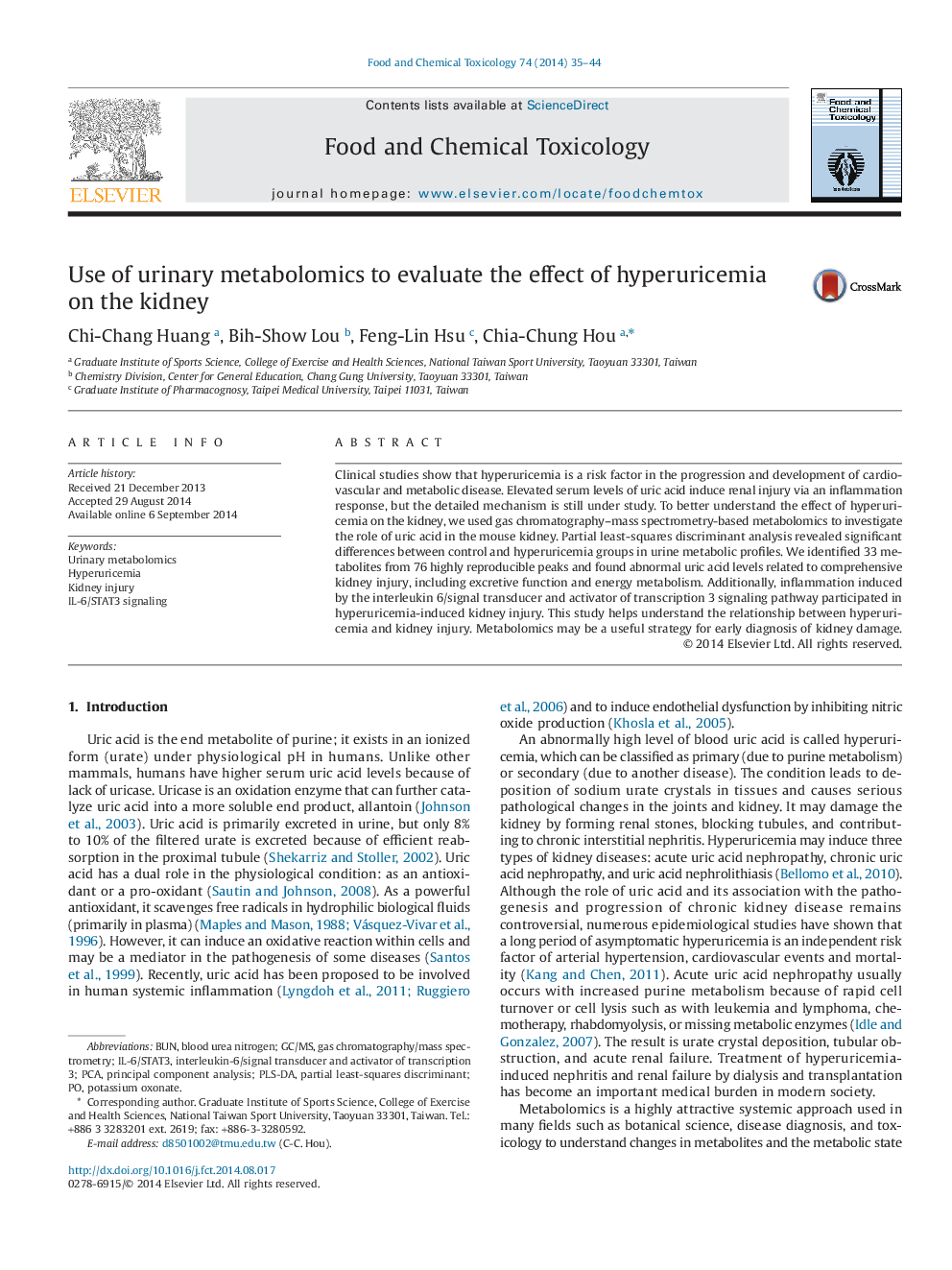| Article ID | Journal | Published Year | Pages | File Type |
|---|---|---|---|---|
| 5849951 | Food and Chemical Toxicology | 2014 | 10 Pages |
Abstract
Clinical studies show that hyperuricemia is a risk factor in the progression and development of cardiovascular and metabolic disease. Elevated serum levels of uric acid induce renal injury via an inflammation response, but the detailed mechanism is still under study. To better understand the effect of hyperuricemia on the kidney, we used gas chromatography-mass spectrometry-based metabolomics to investigate the role of uric acid in the mouse kidney. Partial least-squares discriminant analysis revealed significant differences between control and hyperuricemia groups in urine metabolic profiles. We identified 33 metabolites from 76 highly reproducible peaks and found abnormal uric acid levels related to comprehensive kidney injury, including excretive function and energy metabolism. Additionally, inflammation induced by the interleukin 6/signal transducer and activator of transcription 3 signaling pathway participated in hyperuricemia-induced kidney injury. This study helps understand the relationship between hyperuricemia and kidney injury. Metabolomics may be a useful strategy for early diagnosis of kidney damage.
Keywords
Related Topics
Life Sciences
Agricultural and Biological Sciences
Food Science
Authors
Chi-Chang Huang, Bih-Show Lou, Feng-Lin Hsu, Chia-Chung Hou,
